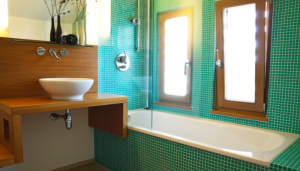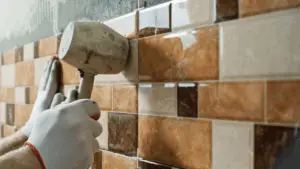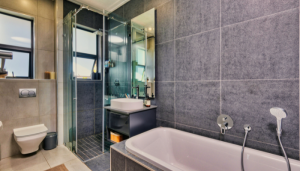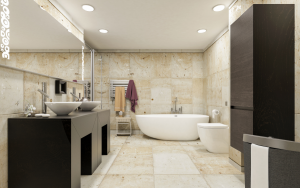Why Should I Upgrade My Bathroom Tiling?
Tiling isn’t just about aesthetics—it’s about functionality and long-term protection. Old, cracked, or outdated tiles can let in moisture, leading to mold, mildew, and costly water damage beneath the surface.
Boost home value with modern tile styles
Improve bathroom safety with non-slip tiles
Protect subfloors with waterproof grout
Is It Time to Replace My Shower Tiles?
If I notice discolored grout, mold buildup, or tiles that feel loose underfoot, it’s probably time to replace those shower tiles. Delaying this can result in damage behind the walls or beneath the floor.
Signs I Should Replace Shower Tiles
Cracks or chips in tiles
Mold that keeps coming back
Soft or spongy feeling behind tiles
How Can I Fix Cracked or Loose Tiles?
One cracked tile can seem harmless—but even a small breach can allow water to seep through. Fixing these issues early prevents water damage and keeps your bathroom looking clean and fresh.
Quick Solutions
Replace single tiles with matching designs
Use waterproof adhesive and grout
Call a pro to assess deeper issues
Why Regrouting My Bathroom Floor Matters
Grout wears down over time, and when it does, it becomes porous and prone to mildew. Regrouting keeps my bathroom floor looking fresh and prevents leaks that can destroy subflooring.
Helps maintain waterproofing
Restores clean, modern look
Stops odors caused by mildew
Can I Modernize My Bathroom with New Tile Styles?
Absolutely! Swapping out those tired patterns for modern tile styles can breathe new life into the space. Think geometric shapes, subway tiles, or natural stone textures for a high-end look.
Popular Tile Upgrades
Matte-finish porcelain
Marble-look ceramic
Hexagonal floor tiles
What’s the Best Way to Tile My Bathroom Walls?
Tiling walls adds depth and character. Whether I go for floor-to-ceiling tiles or a decorative backsplash behind the sink, it’s a sure-fire way to upgrade my bathroom.
Use vertical tiles to make ceilings feel higher
Choose large-format tiles for fewer grout lines
Always use waterproof tile grout in wet areas
Should I Clean or Replace My Tile Grout?
Sometimes grout just needs a deep clean—but if it’s crumbling, stained, or moldy, I should consider replacing it. Clean tile grout helps my entire bathroom look newer.
Signs I Need New Grout
Grout flakes or chips away easily
Persistent mold or discoloration
Water pooling in grout lines
Is Waterproof Tile Grout Worth It?
Yes! Standard grout absorbs water, but waterproof tile grout seals out moisture and resists mold growth. It’s especially important around showers, tubs, and floors.
Reduces maintenance
Extends lifespan of tiles
Prevents structural damage
How Often Should I Retile My Bathroom?
I should think about retiling every 15-20 years, or sooner if there are visible signs of wear. Keeping up with trends and materials can increase resale value and comfort.
Outdated designs make bathrooms feel old
New tiles improve insulation and hygiene
Pros can inspect hidden damage before retiling
DIY vs. Professional Services
While I can tackle minor fixes, larger tiling projects are best left to the pros. They have the tools, experience, and precision to ensure every tile is perfect.
DIY can lead to uneven layouts and leaks
Professionals ensure long-lasting results
Save time, stress, and avoid costly mistakes
Testimonials
“I’m blown away by the results! Quick, efficient, and exceeded all my expectations.” — Alex G., Austin, TX
“They made everything so easy! I saved time, effort, and stress. Highly recommend!” — Taylor M., Boston, MA
“I can’t stop telling everyone about this! It was the best choice I made all year.” — Jamie P., San Diego, CA
Did You Know?
Did you know that mold can start growing behind a cracked tile in as little as 48 hours if water gets through?
TL;DR Summary
I should replace shower tiles if they’re cracked or moldy
Regrouting protects my floor from water damage
Modern tile upgrades boost style and home value
Waterproof grout extends tile life and reduces maintenance
Professional tiling services offer quality and long-term savings






